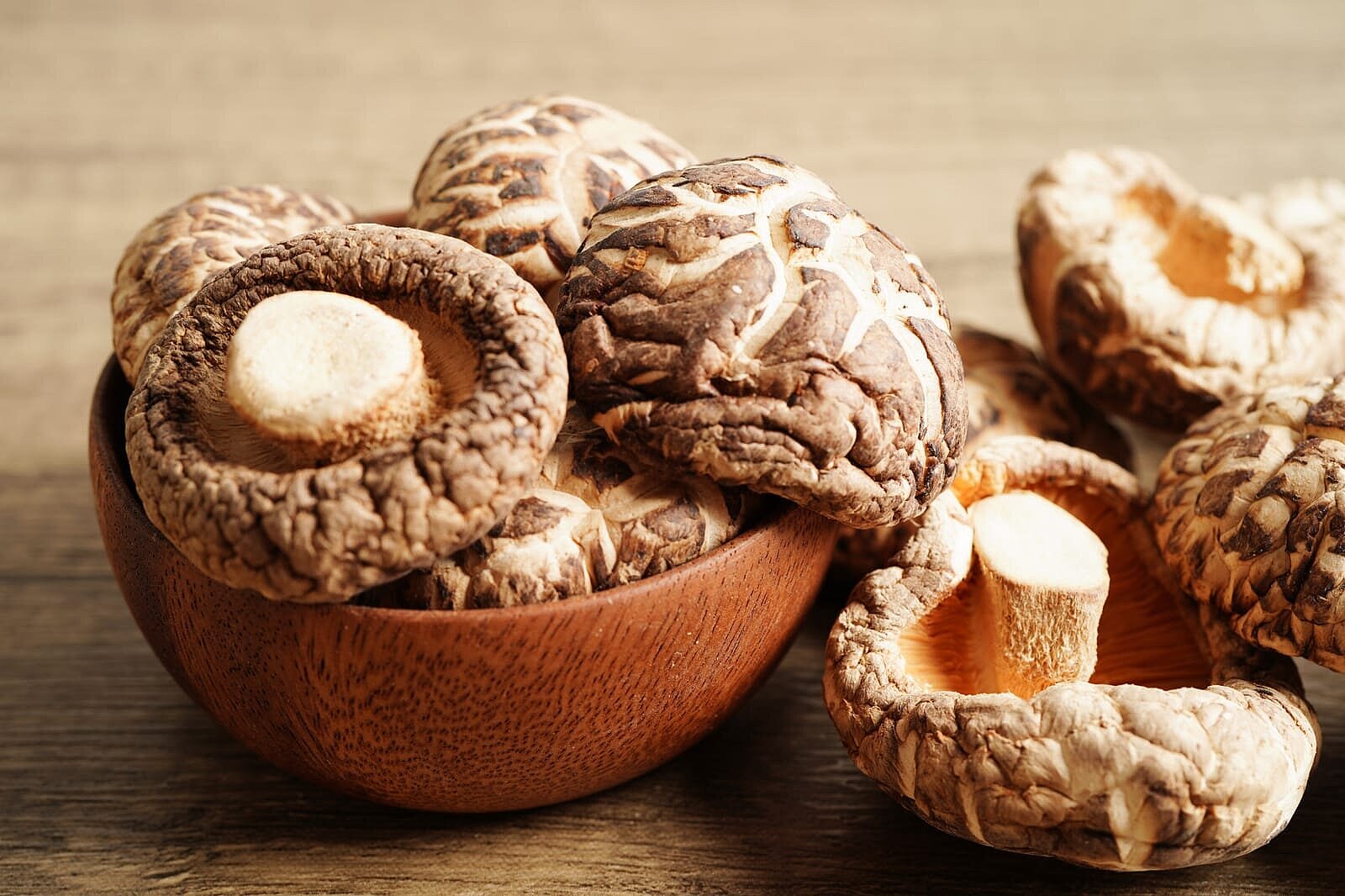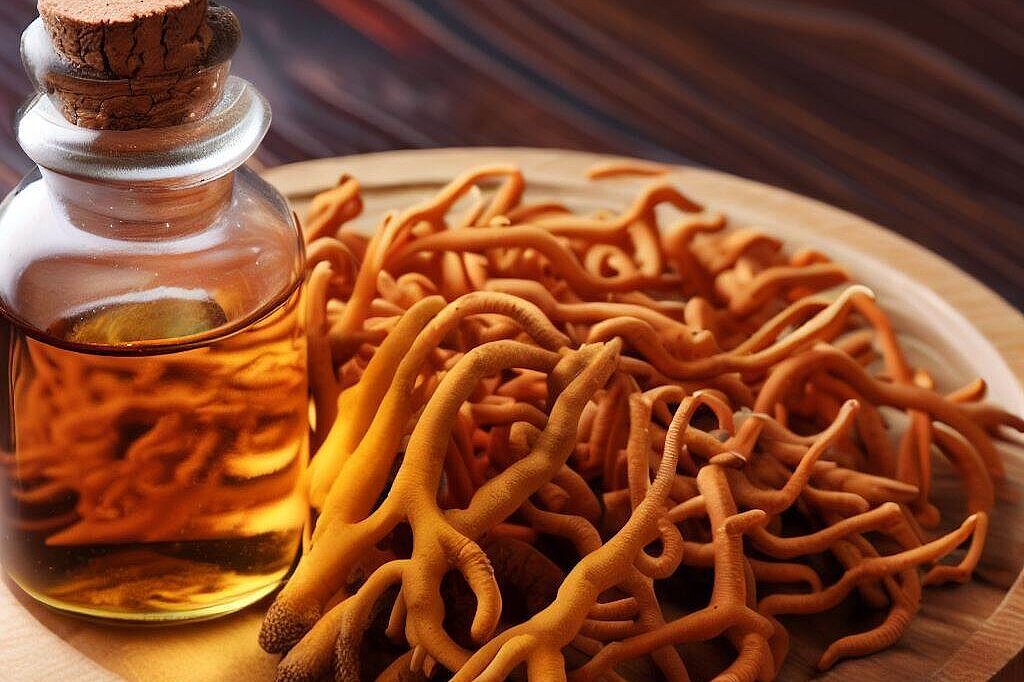Inonotus obliquus

What is Inonotus obliquus?
Inonotus obliquus is a fungus that grows on birch trunks where it forms large, black and charred growths. These growths are sterile tubers that grow for several years without forming spores. Only when the birch dies does the fungus form flat fruiting bodies with brown pores. The fungus is mainly found in the cold regions of the north and east, such as Siberia, Scandinavia and Canada. It is very rare and is therefore often cultivated or imported from other countries.
The mushroom contains a variety of bioactive substances that give it its healing properties. These include, among others:
- Polysaccharides: complex carbohydrates that strengthen the immune system and have an anti-inflammatory effect
- Betulinic acid: an organic acid that comes from birch bark and has antiviral, antibacterial and antitumor effects
- Melanin: a pigment that gives the mushroom its black color and has an antioxidant, cell-protecting and radiation-absorbing effect
- Phenols: aromatic compounds that have an antioxidant, antimicrobial and hormone-regulating effect
- Triterpenes: plant steroids that have an anti-inflammatory, liver-protecting and cholesterol-lowering effect
What are the benefits of Inonotus obliquus for dogs?
Inonotus obliquus has a number of health benefits for dogs. It can be used both preventively and therapeutically. The most important areas of application include
- Gastrointestinal disorders: The mushroom can heal ulcers and inflammation in the stomach and intestines, reorganize the intestinal flora and promote digestion. It can also help with polyps in the gastrointestinal tract.
- Cancer diseases: The mushroom has a strong anti-tumor effect and can inhibit the growth of cancer cells, induce apoptosis (cell death) and prevent metastasis. It can also alleviate the side effects of chemotherapy and radiotherapy.
- Immune system: The mushroom can strengthen the immune system and protect against infections. It is also effective against viruses, bacteria and fungi. It can also help with allergic skin conditions such as eczema or psoriasis.
- Metabolism: The mushroom can stimulate the metabolism and lower blood sugar levels. It also lowers cholesterol and regulates blood pressure.
- General vitality: The mushroom can satisfy hunger, banish tiredness and increase performance. It also has a stress-reducing and mood-enhancing effect.
What are the disadvantages of Inonotus obliquus for dogs?
Inonotus obliquus is a very safe mushroom that generally causes no side effects or interactions. However, there are some points you should consider before giving it to your dog:
- Quality: as the mushroom is very rare, you should make sure you buy it from a reputable supplier that guarantees high quality and purity. There are many inferior or counterfeit products on the market that can be ineffective or even harmful.
- Dosage: The dosage of Inonotus obliquus depends on various factors, such as the weight, age and health of your dog. You should therefore consult a vet or mycotherapist who can recommend an individual dosage. As a guideline, you can give your dog around 0.5 to 1 gram of dried mushroom per 10 kilograms of body weight per day.
- Consumption: The mushroom is very hard and cannot be eaten raw. You must therefore grind it into a powder or process it into an extract. You can then mix the powder or extract with your dog's food or water or give it as a capsule or tablet.
- Precautions: The mushroom can affect blood clotting and should therefore not be given to dogs taking blood-thinning medication or suffering from bleeding disorders. It can also increase the effect of insulin and should therefore not be given to dogs that suffer from diabetes or are fed a sugary diet. It can also influence the effect of hormones and should therefore not be given to dogs suffering from hormonal diseases or taking hormonal medication.
Inonotus obliquus is a vital mushroom that has many benefits for the health of dogs. In particular, it can help with gastrointestinal disorders, cancer, the immune system and metabolism. It is very safe and well tolerated when given in the correct quality, dosage and form. However, it should be used with caution in dogs taking blood-thinning, sugar-containing or hormonal medication or suffering from such conditions.
If you notice any signs of hypersensitivity or poisoning in your dog, you should see your vet immediately. We are not a substitute for a vet, but we try to be as accurate as possible. Every dog reacts differently and we recommend you get a second opinion or consult your vet if in doubt.
Stay healthy and take good care of your four-legged friend!😊
Similar to Inonotus obliquus
Ganoderma lucidum is a tree fungus that grows on various hardwoods, especially oaks and hornbeams. It has a shiny, varnish-like cap that can be red, brown or black, depending on the variety. The...
Shiitake mushrooms are edible mushrooms that originally come from Asia. They grow on logs or slices of wood and have a brown cap with white lamellae. Their name translates as "mushroom of the...
Grifola frondosa is a large mushroom that consists of many individual caps that look like a fan or a cauliflower. It can grow up to 50 cm in diameter and weigh several kilograms. It usually grows at...
Cordyceps sinensis is a fungus that grows on certain caterpillars and eats them from the inside out. It is also known as the Chinese caterpillar fungus or doll's leg. The mushroom is mainly found in...



